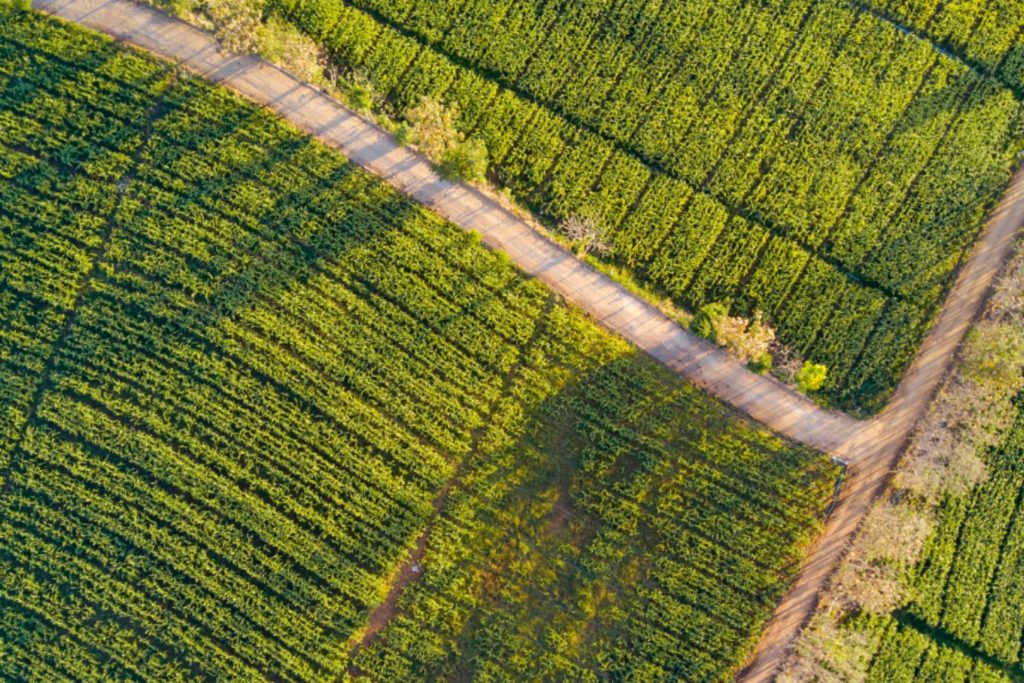Solinftek will take its robot to monitor fields in the US and Canada
4 min read

Disclosure / Solinftec
With a recent US$ 10 million investment, Solinftec is looking to scale up sustainable agriculture
Solinftec is preparing to land in North America. Founded by a team of Cuban engineers, Brazilian Octec will bring its surveillance robot to the States and Canada this year — but CEO Britaldo Hernandez’s plan is to reach the African market.
The creation of the machine is the result of the “pharaonic” vision of the company’s founders and the investments made since the end of 2016, says Hernández, who is a partner in the business.
About two weeks ago, the company received USD 10 million (R$ 54.8 million at today’s prices) to implement expansion plans. It is part of an investment round in which the company raised US$60 million (R$328.79 million) to build and expand Solix AG Robotics.
Powered by solar energy, the 2.5-meter robot has the capacity to monitor 14 million plants per week and is recommended for use on 200 hectares. It works with Alice AI, an artificial intelligence platform launched by Solinftec in 2018. Today, it is already used in about 11 million hectares spread across countries like the United States, Colombia, Canada and China.
The integration between machine and system gives the robot access to about 3.7 trillion data provided by analysis on 250 thousand customer hectares using Solinftec’s artificial intelligence.
read more: Dutch food technology makes sausages from farmed meat
Hernández, 56, got his first contact with Brazil in 1998 when he worked on the development of automation in the sugar cane industries. During an exchange, he met Cosan and Clealco, two large companies involved in the production of products, and saw that the Brazilian market still had “room to create something new in agriculture,” he says.
This idea was the basis for Solinftec and the robot that will start operating in Brazil in September in the production of cereals and cotton.
Forbes interviewed Hernandez exclusively to learn a little more about the robot’s strategy and future plans for inserting it into the Canadian and US markets. Check:
Forbes: What is the main difference between the Brazilian and US markets?
Britaldo Hernandez: Surprisingly, the Brazilian producer is more sophisticated than the North American producer. First, because of the size of the department. Second, because of its high corporate activity—in the United States, more than 90% of producers are family members. But what’s better there than in Brazil is that North American cooperatives work with 60% of all producers.
F: What strategy is being followed to insert the robot into this new market?
BH: Solinftec approaches producers through partnerships. And the project is going well. In the world, cooperative and classic agriculture have a slow technological evolution, but then came the robot that can integrate on the platform of artificial intelligence. Now everyone accelerates very fast in America.
Today I have more orders than I can produce more robots. We also have a queue of people in the US and Canada who are interested in paying in advance to get the robot. So, we are talking to a company to increase production. Attracting small producers to these markets is our priority.
F: Why is the robot attracting so much interest from manufacturers?
PH: He’s an American problem-solving robot. A producer depends on a large amount of spray and can lose money if done poorly. America also has a tough time with weeds, and our technology helps solve both problems.
F: How do you assess the current moment in agriculture?
PH: I have always believed that agriculture needs structural change. Not just the way we handle data and information. We need a change involving machinery, chemicals and farm management. I think our robot platform solves this problem. We want to become the first company to market a mass-produced commercial robot for the world’s food staple cereal crops.
F: Are you already thinking about expanding the technology to countries other than Brazil, Canada and the US?
PH: We need to license the robot in the US and Canada before thinking about other countries. But we are a bit blind and obsessive about solving the problems of global agriculture.
My dream, we developed this technology with this in mind, is to take the robot to Africa. Between the end of this year and the beginning of next year I have to start planning for this goal, but I definitely want to build a continent-specific robot.
To my mind, the global solution to food and the environment is to create opportunities for countries that are not producing today to produce.
I believe countries like Brazil and USA are reaching a limit in their production even with technological development. This range is very different in Africa, where any technology can multiply production by a factor of five – and it can be replicated in any country in Asia or Latin America that does not yet have access to this type of technology. I have one compelling mission: I want to impact agriculture for the better and produce more food.

“Communicator. Award-winning creator. Certified twitter geek. Music ninja. General web evangelist.”




